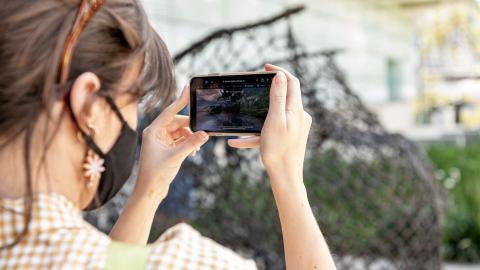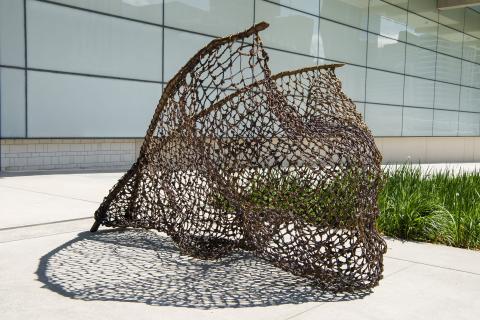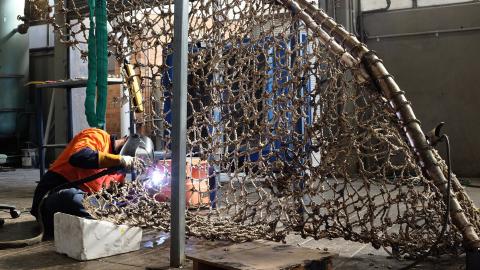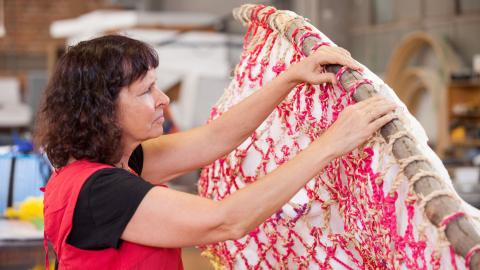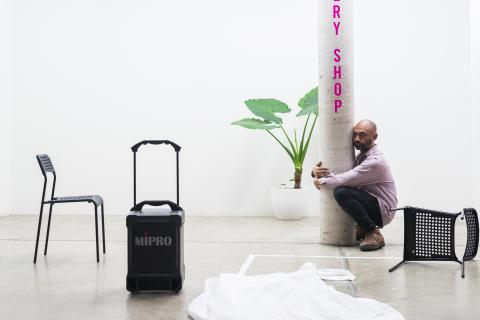The making of tow row
Judy Watson's tow row 2016 was designed in collaboration with Elisa Jane (Leecee) Carmichael, and then cast in bronze by Urban Art Projects (UAP), an internationally recognised local foundry — based in Brisbane — with whom Watson has worked for over 20 years.
For tow row, Judy Watson engaged with archival material at Queensland Museum (QM) and the State Library of Queensland and conducted conversations with local Indigenous community representatives identifying with the area. Following a recommendation from the artist, Urban Art Projects (UAP) engaged Leecee Carmichael, a Quandamooka artist who often works with textile and fibre, as the UAP intern for the QIAPAC Project.

Artists Judy Watson and Elisa Jane Carmichael visit GOMA in preparation for tow row 2016 / Photograph: Mark Sherwood, QAGOMA
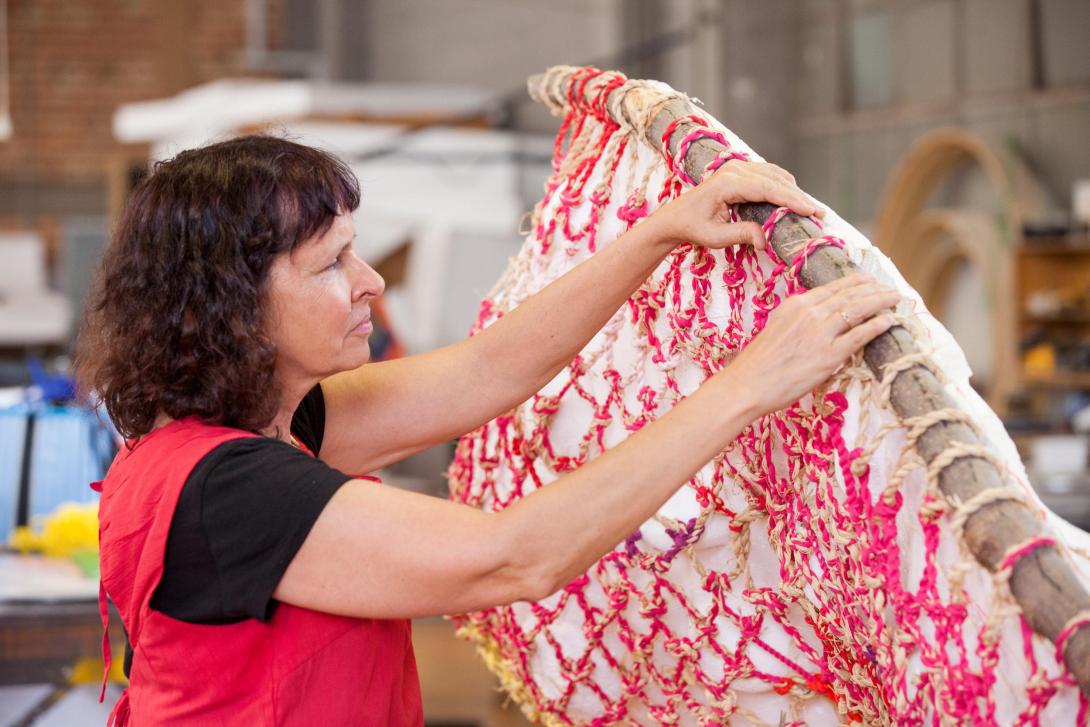
Judy Watson during the making of tow row, UAP, 2016 / Photograph: Chloë Callistemon, QAGOMA
Leecee worked closely with Judy during the research phase of the project, and — with support from Imelda Miller (Curator, Torres Strait Islander and Pacific Indigenous Studies) at QM — was able to study several examples of woven fish nets used by Indigenous peoples around Queensland. These assisted in the development of samples and prototypes for the final form.
This use of fibre and water as the conduit for catching fish evokes ideas of sustenance, family, culture, survival. The bark used to make the nets was probably collected from the swamps and scrub in the vicinity of the river. The inner bark fibre would have been rolled along the legs, then woven into nets and attached to wood for easy manipulation during the harvesting of fish. The woven nets allow light and air to pass through them and create beautiful shadows across the surface of the ground. The fragility of the objects cloak their hidden strength and are a metaphor for the resilience of Aboriginal people who have held onto the importance of land, culture and family through adversity and deprivation.
— Judy Watson1
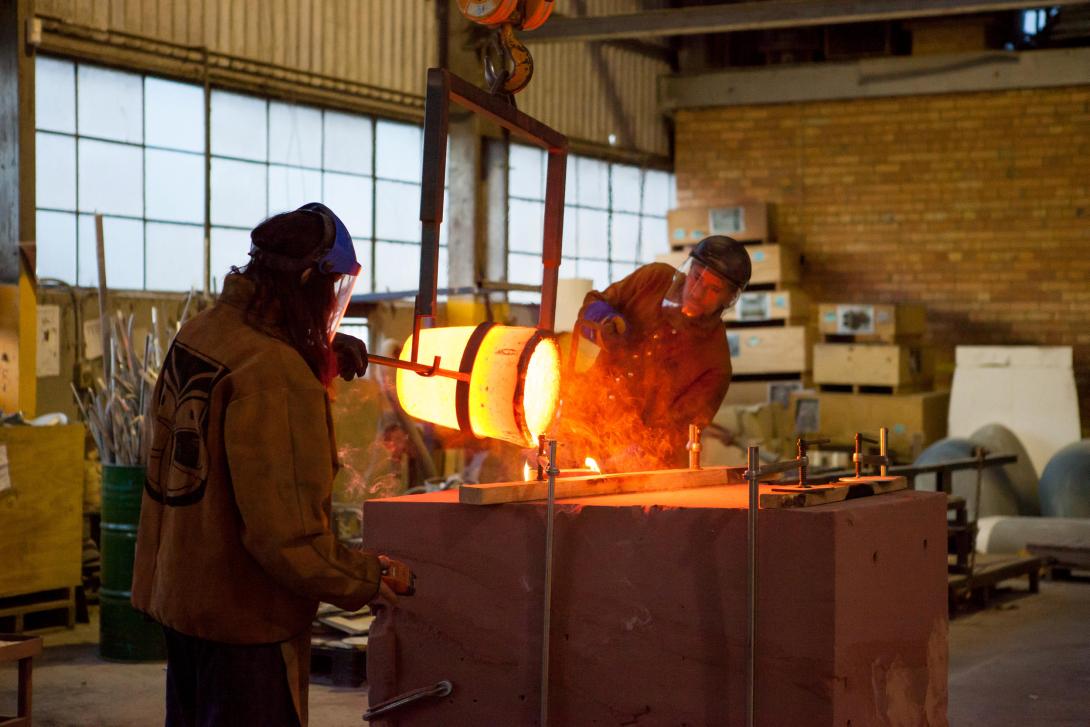
UAP craftsmen pour the molten bronze for Judy Watson's tow row, UAP, 2016 / Photograph: Chloë Callistemon, QAGOMA
A UAP craftsman works on a bronze component for Judy Watson's tow row, UAP, 2016 / Photograph: UAP

A UAP craftsman works on a bronze component for Judy Watson's tow row, UAP, 2016 / Photograph: UAP
In its final resolution, the artist intends that the bronze ‘contain[s] a billowing force akin to a wash of water through the net.’2 This active, yet delicate form animates the history of its site through the sculpted object, bringing historical memory into physical form — as if the concealed activity is being dredged up from a collectively hidden memory. Its vessel-like shape resonates with others throughout the artist's practice in printmaking, painting and sculpture that have variously marked out delineations of country and coastlines, the outlines of bodies and vessels, cultural objects and canoes.3
Endnotes:
- Judy Watson, artist's concept statement, QIAPAC, 2016.
- Judy Watson, artist's concept statement, QIAPAC, 2016.
- This text adapted from a 2016 essay by Kyla McFarlane (former Acting Curatorial Manager, Australian Art).
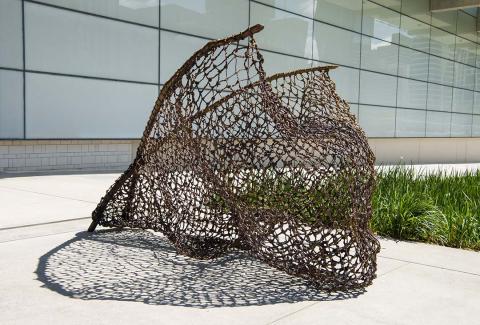
tow row 2016
- WATSON, Judy - Creator

